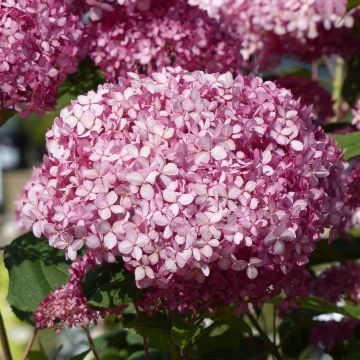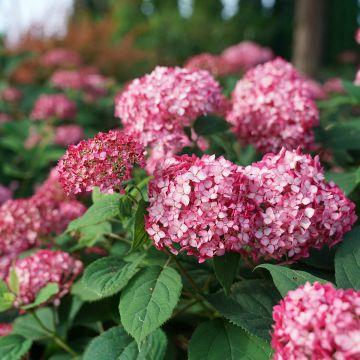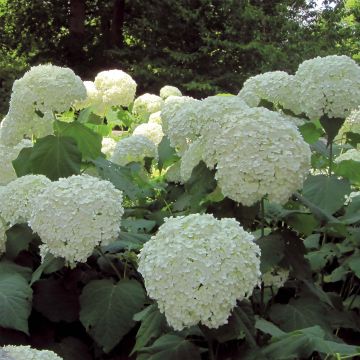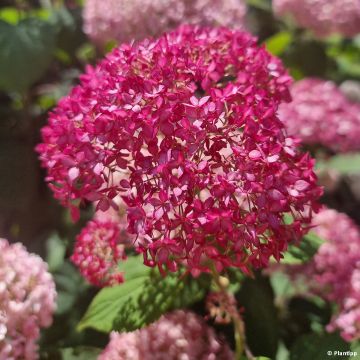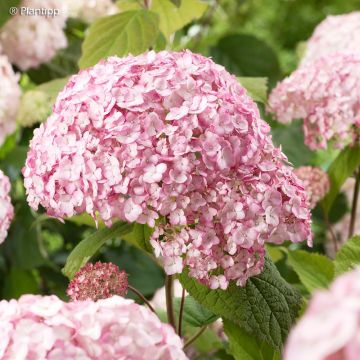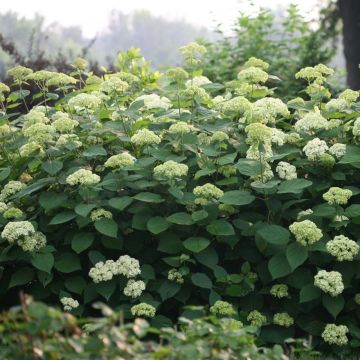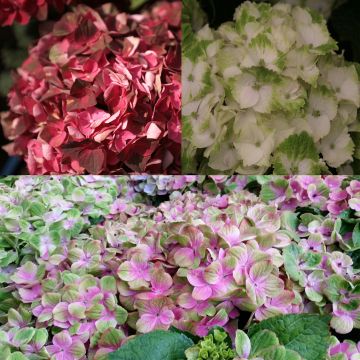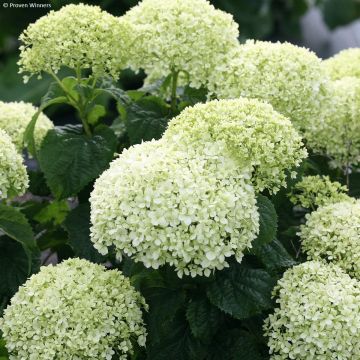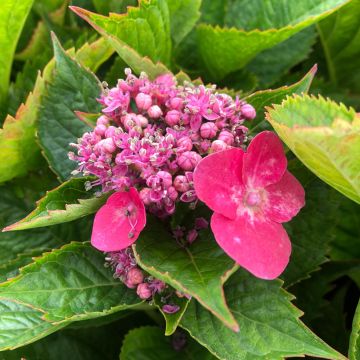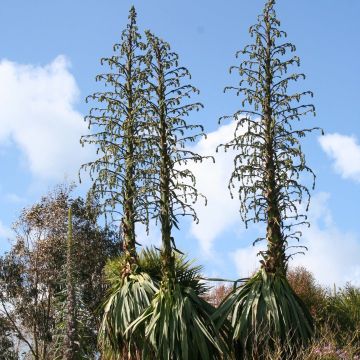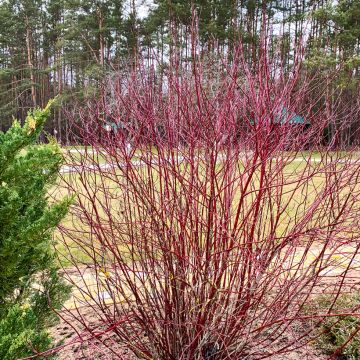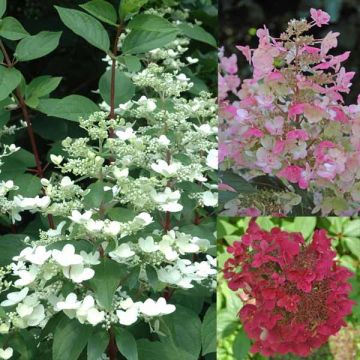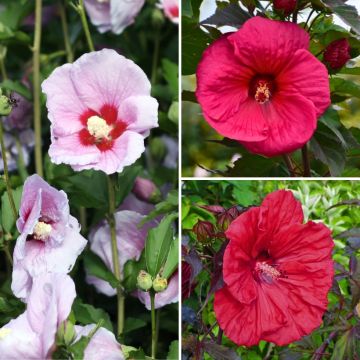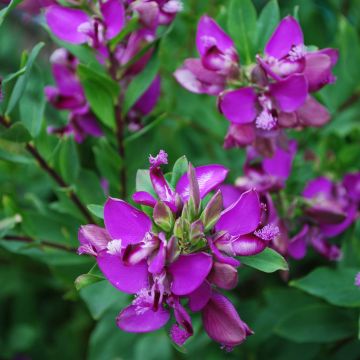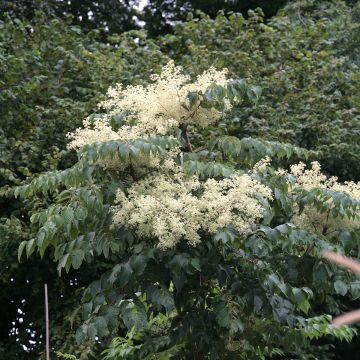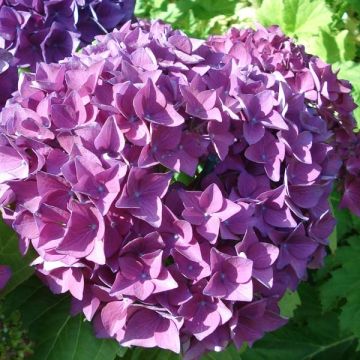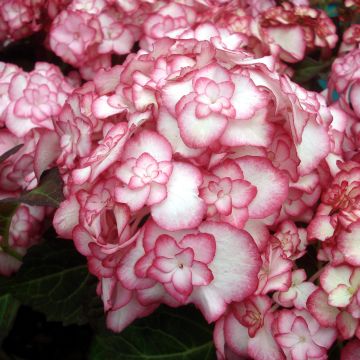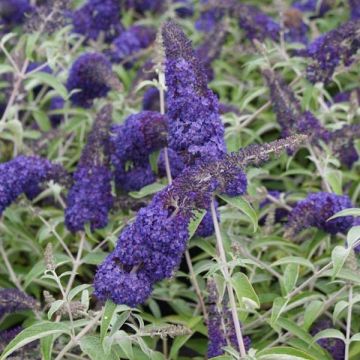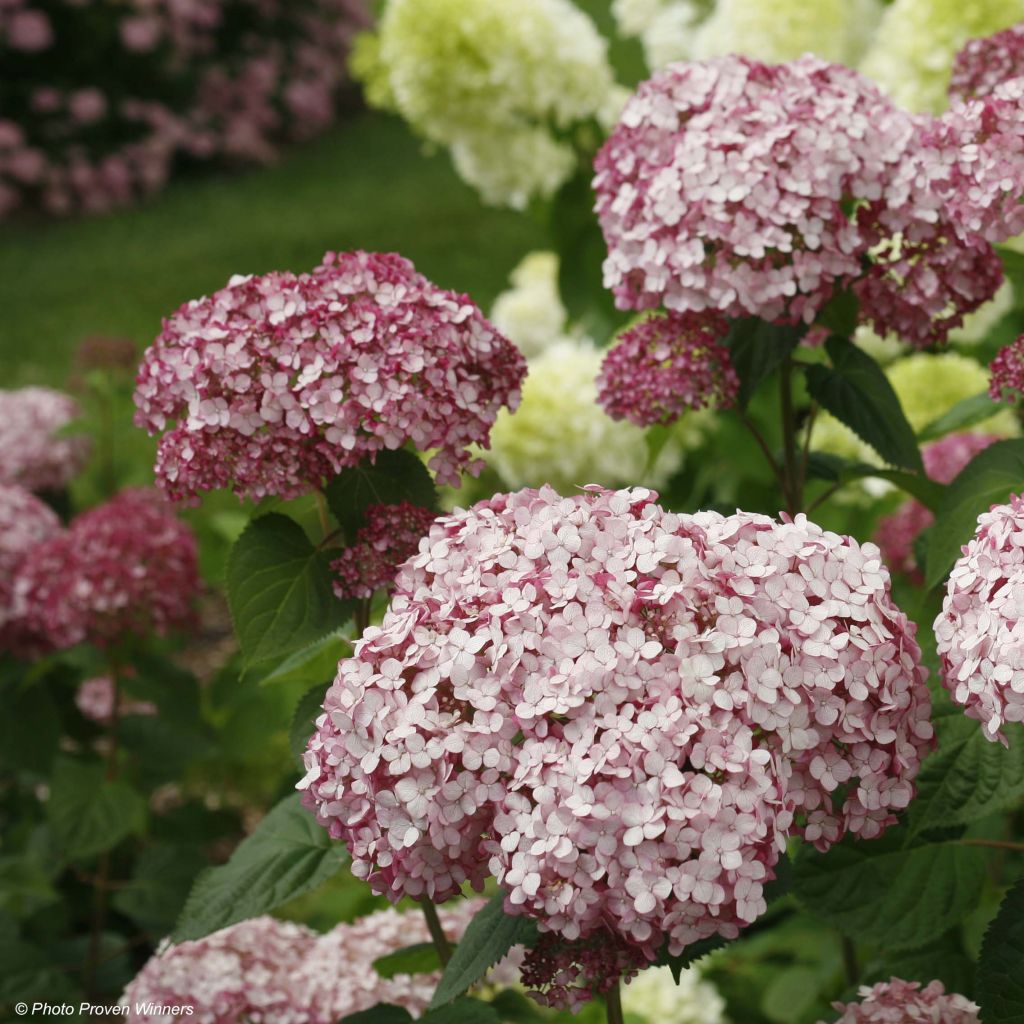

Hydrangea arborescens Sweet Annabelle
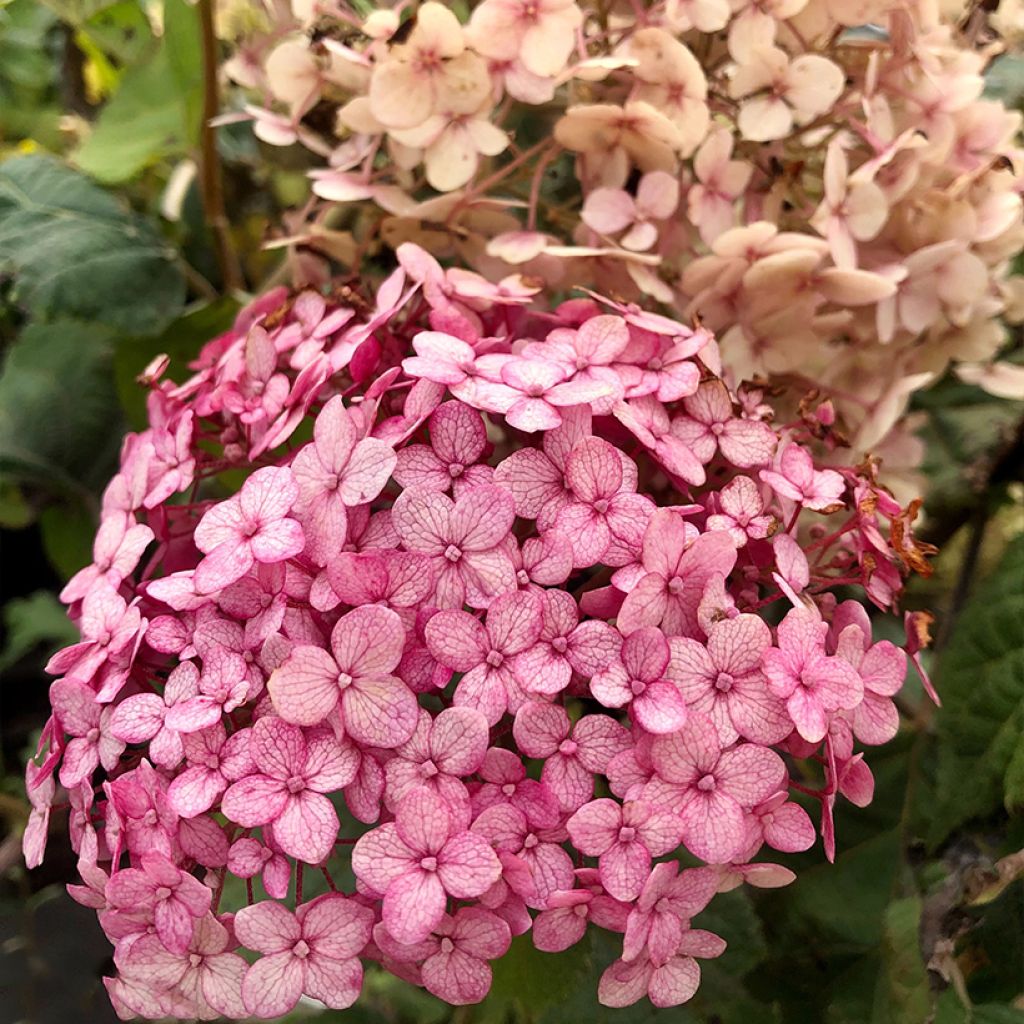

Hydrangea arborescens Sweet Annabelle
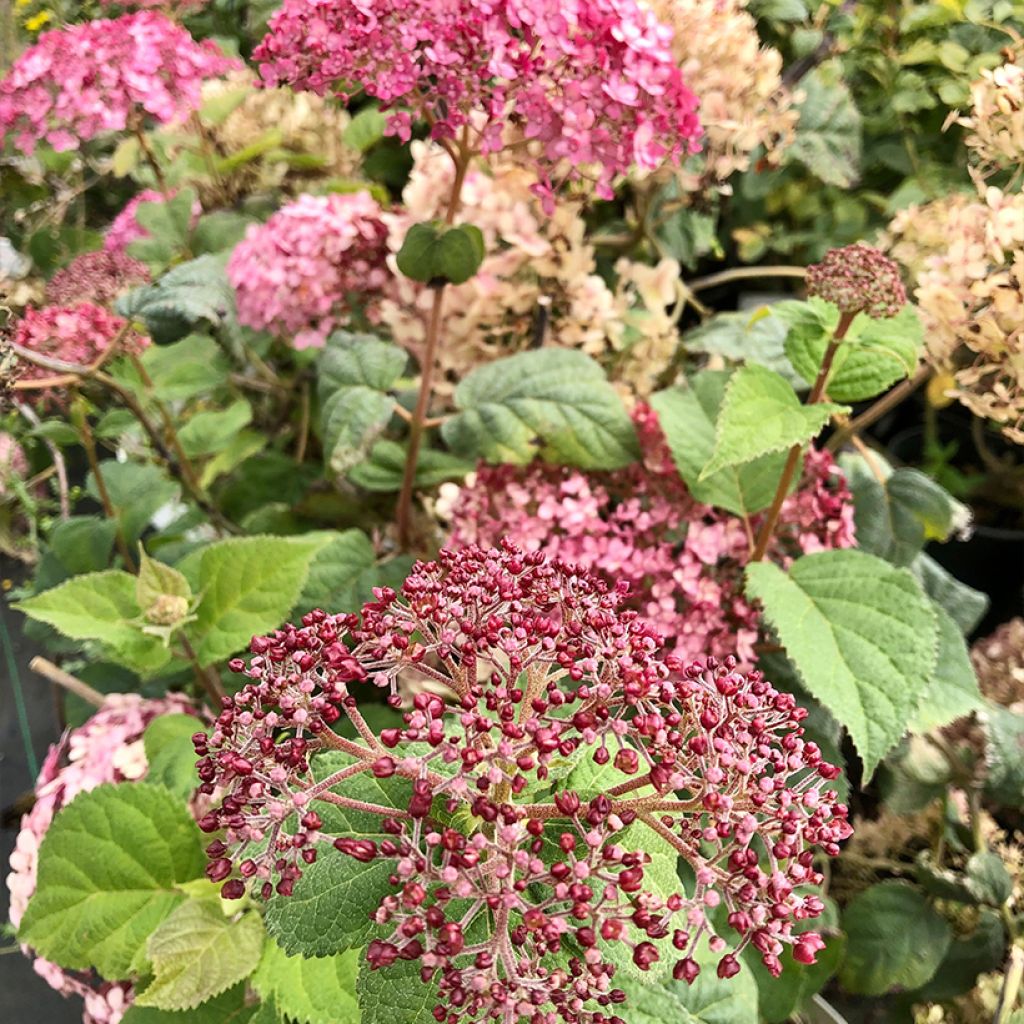

Hydrangea arborescens Sweet Annabelle
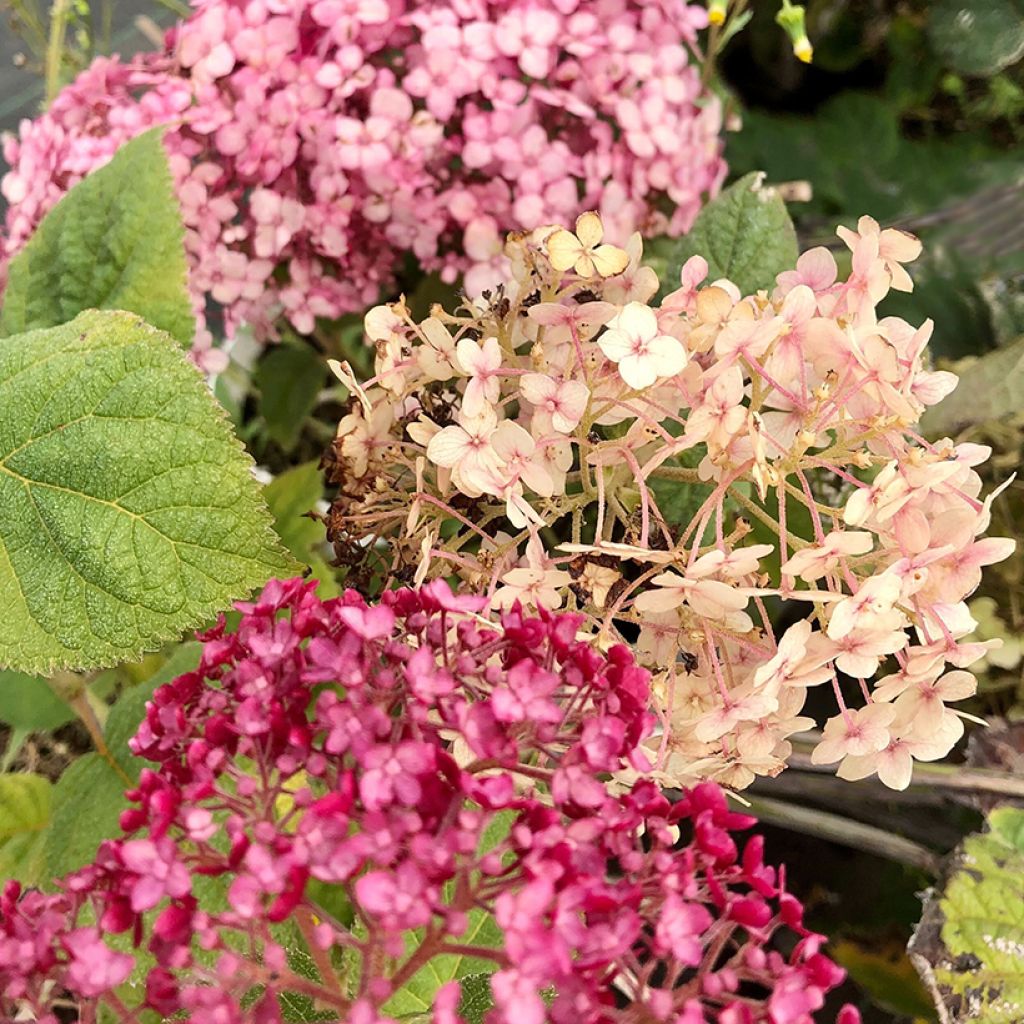

Hydrangea arborescens Sweet Annabelle
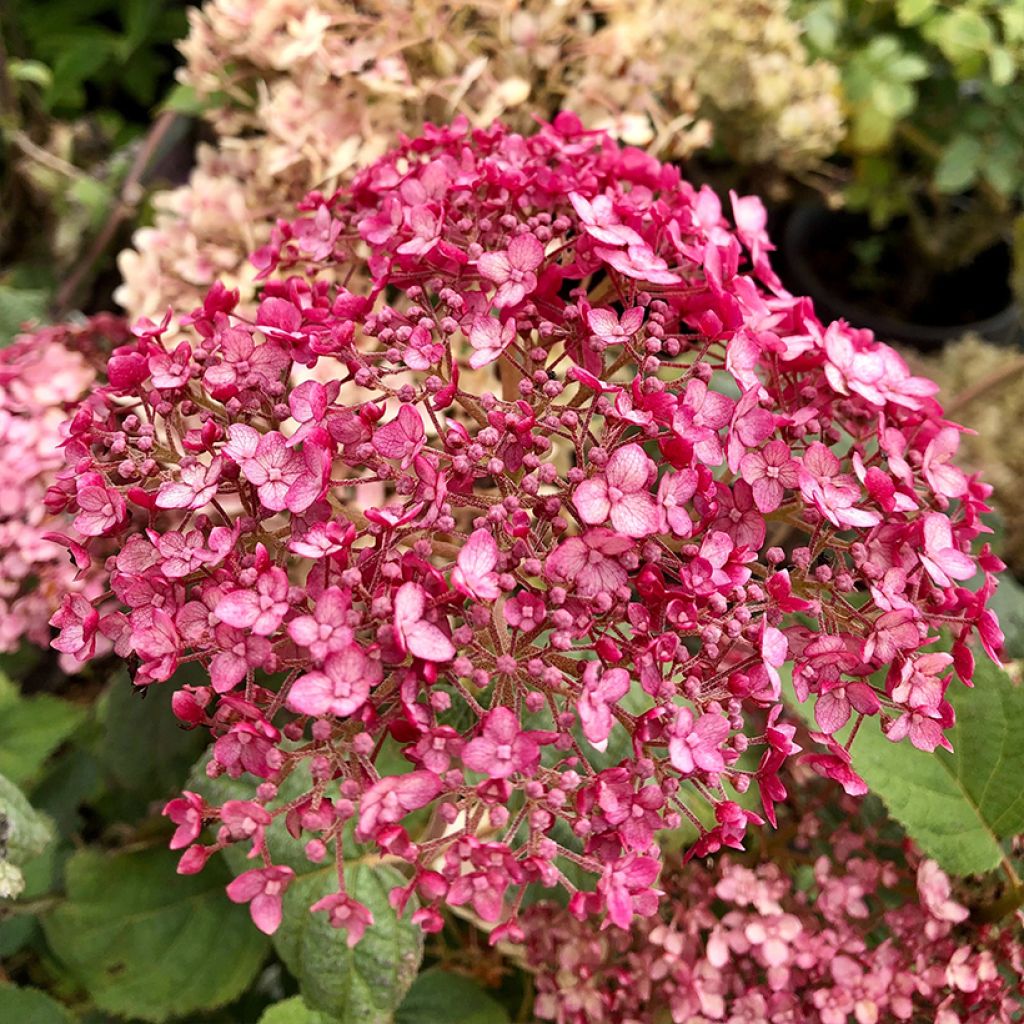

Hydrangea arborescens Sweet Annabelle
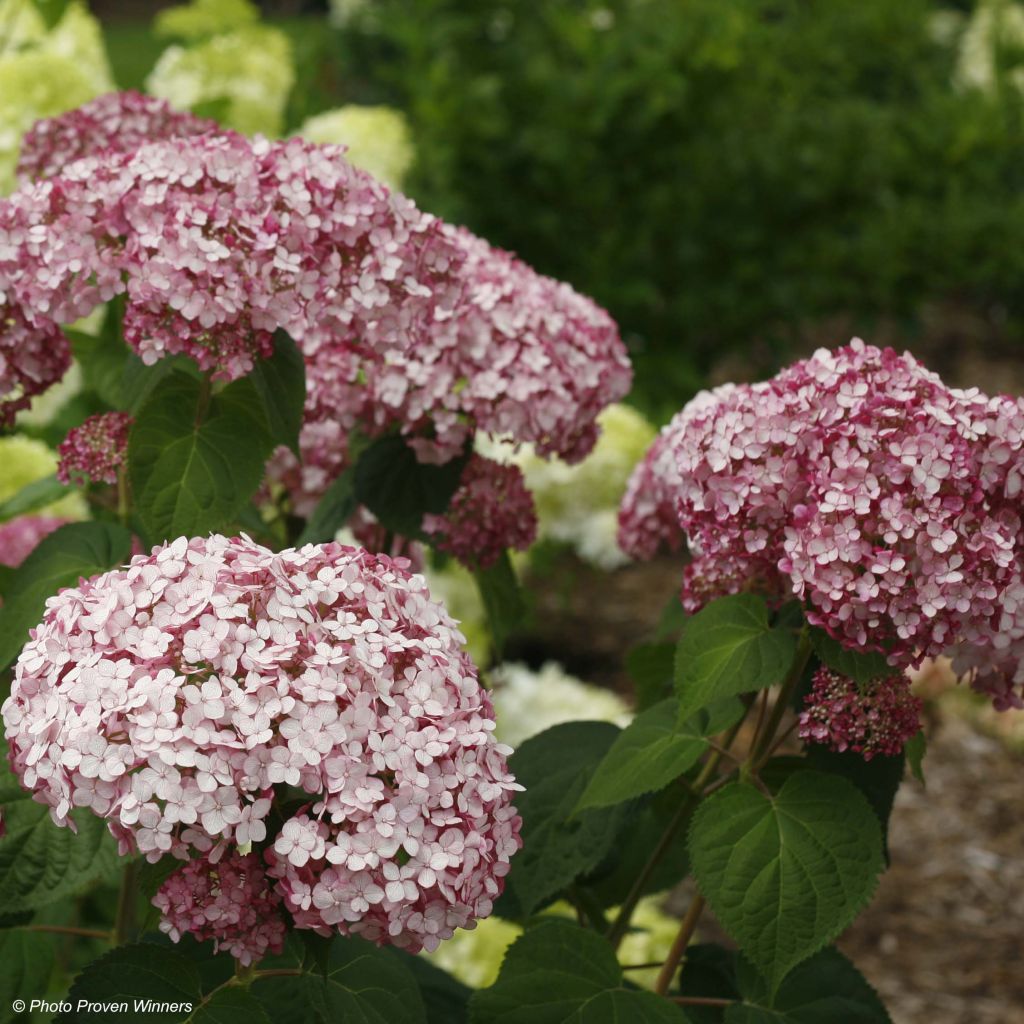

Hydrangea arborescens Sweet Annabelle
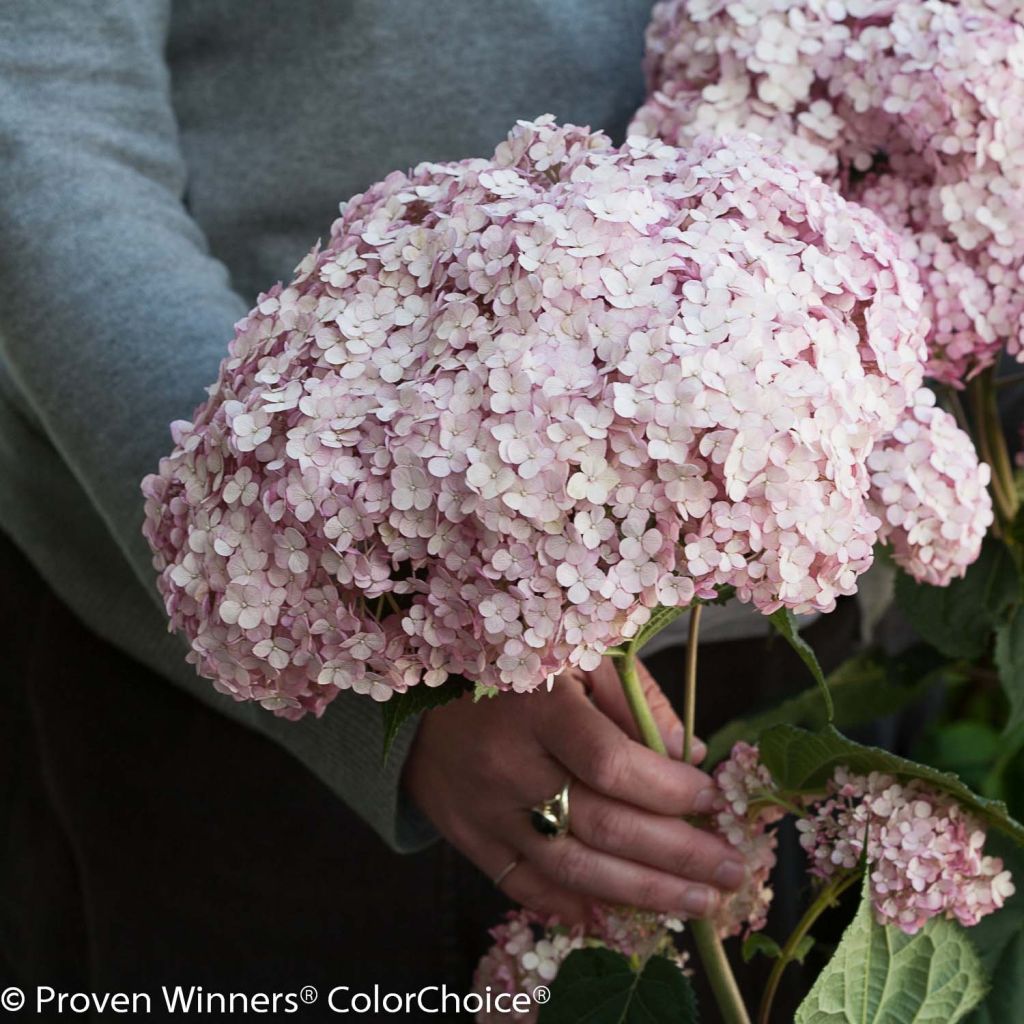

Hydrangea arborescens Sweet Annabelle
Hydrangea arborescens Sweet Annabelle
Hydrangea arborescens Sweet Annabelle® (NCHA4)
Smooth Hydrangea, Wild Hydrangea, Sevenbark
Fast delivery, young plant well protected in the package. Plant arrived with flowers (end of flowering, but it gives a very positive idea), and already well-established. It's already making an impression.
Sandrine, 04/09/2022
This item cannot be shipped to the selected country
Delivery charge from €5.90
Delivery charge from €5.90
More information
Schedule delivery date,
and select date in basket
This plant carries a 24 months recovery warranty
More information
We guarantee the quality of our plants for a full growing cycle, and will replace at our expense any plant that fails to recover under normal climatic and planting conditions.
From €5.90 for pickup delivery and €6.90 for home delivery
Express home delivery from €8.90.
From €5.90 for pickup delivery and €6.90 for home delivery
Express home delivery from €8.90.
Does this plant fit my garden?
Set up your Plantfit profile →
Description
Hydrangea arborescens Sweet Annabelle ('Ncha4') completes this beautiful series of American hydrangeas with enormous globular flowers in an attractive shade of pink-lilac tinged with a brighter pink. In the same vein as the famous 'Annabelle', the arborescent hydrangeas from Virginia are appreciated for their abundance of flowers, their hardiness, their better tolerance to sunlight and slightly acidic soils, as well as their vigour. This beautiful bush with a rounded habit forms very large pink balls throughout the summer, which turn an attractive green colour over time. The sturdy stems easily support the weight of the flowers, even when soaked with rain. It will find its place in sunny flower beds and hedges, and adapts perfectly to pot or container cultivation on a terrace. Its flowers are beautiful in bouquets.
Hydrangea arborescens, or Virginia Hydrangea, belongs to the large Hydrangeaceae family. This botanical species native to the Southeastern United States is less demanding in terms of shade and soil than its Asian counterparts. It has produced numerous varieties through hybridisation that have proven to be excellent garden shrubs, such as the famous 'Annabelle', obtained in the USA.
The 'Annabelle' series, marketed under the name 'Incrediball' outside of Europe, brings together highly branched and highly floriferous bushes that decorate the garden from June until the first frost. Sweet Annabelle, recently introduced, is a very hardy plant that faithfully re-blooms even after cold winters, on the current year's shoots. It has beautiful branched stems that reach up to 1.2m (4ft) and form a bush with a similar width (or even more depending on conditions). They are crowned from the end of June with large, perfectly spherical corymbs that continue to bloom until late summer. The inflorescences can measure up to 30cm (12in) in diameter and are made up of numerous small flowers with 3 to 4 petals, ranging from a bright pink-lilac to a fading green colour at the end of flowering. The overall effect harmonises elegantly with the foliage, which is quite dark green and composed of beautiful, simple, 10 to 20cm (4 to 8in) long, wide and ovate leaves, which are attractively crinkled and deciduous. Hydrangeas can live for many years in the garden, often more than 50 years.
Sweet Annabelle is the perfect choice for gardeners who prefer natural-looking and easy-to-grow hydrangeas. If your decor is more contemporary, or if you have a small urban garden, this moderately growing bush will bring a touch of both architectural and refined elegance. Hydrangea arborescens Sweet Annabelle brightens up any semi-shaded scene, whether planted alone or in groups. Plant a small border of boxwood or Lonicera 'Elegant' at its base to form a setting for its large pink and green flowers. At the front of an urban garden, it brings romance and distinction. It can be surrounded by hellebores, hardy fuchsias, daffodils, and pansies that extend the flowering season and complement the range of colours. While it looks stunning in flower beds and hedges, it is also perfectly suited for use in pots or containers on a terrace. Cut its flowers to create beautiful bouquets.
Report an error about the product description
Hydrangea arborescens Sweet Annabelle in pictures
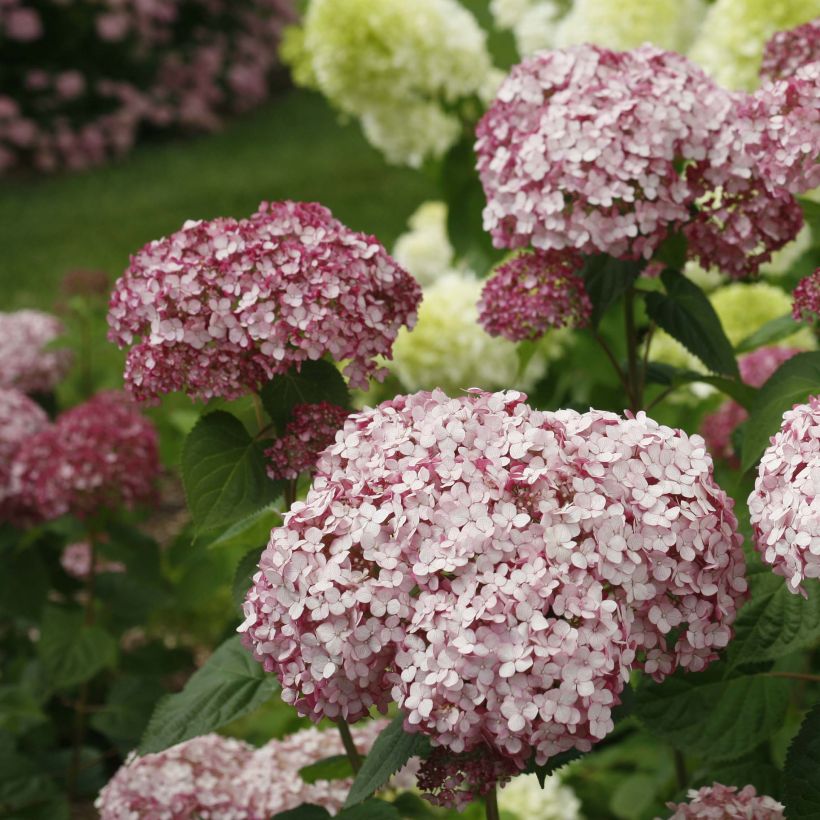

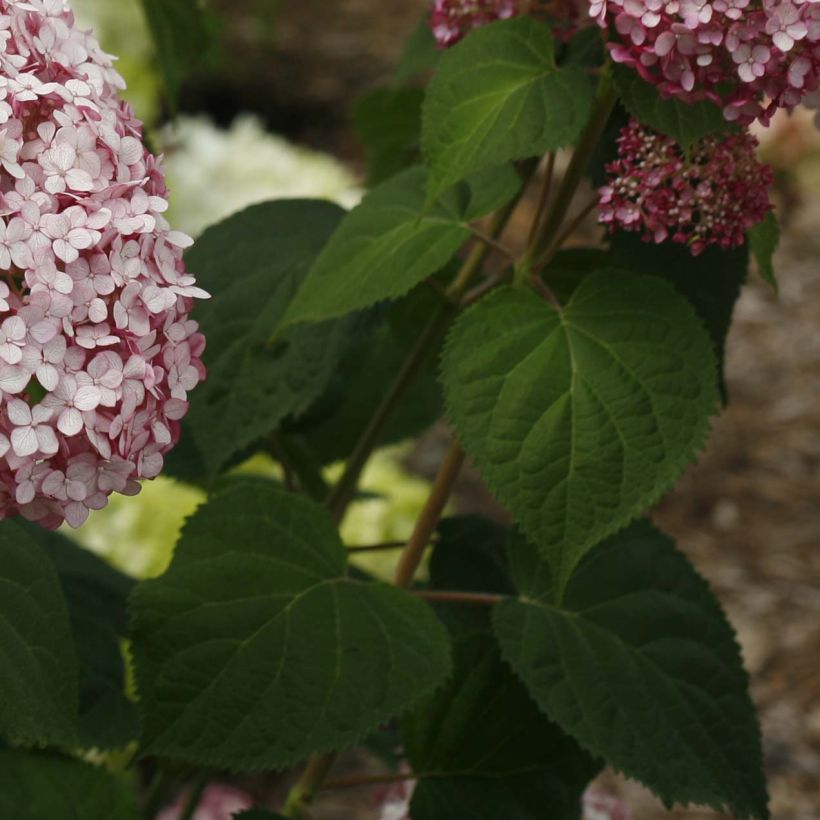

Plant habit
Flowering
Foliage
Botanical data
Hydrangea
arborescens
Sweet Annabelle® (NCHA4)
Hydrangeaceae
Smooth Hydrangea, Wild Hydrangea, Sevenbark
Cultivar or hybrid
Other Hydrangea arborescens
Planting and care
It requires a sunny or lightly shaded location in ordinary, fertile, well-drained soil that remains moist in summer. This variety is not afraid of late frosts, as it continuously produces flower buds. When planting, place it in deeply-worked soil. A good base fertiliser (horn or dehydrated blood) will promote the growth of your plant and nourish it without the risk of burning. The plant is highly perpetual, so do not hesitate to cut off faded flowers in summer. Stop removing the faded flowers towards the end of summer, as the large dried umbels will protect the terminal shoots in winter. You can remove all the dried flowers at the end of February or at the first signs of good weather.
Planting period
Intended location
Care
-
, onOrder confirmed
Reply from on Promesse de fleurs
Summer-flowering shrubs
Haven't found what you were looking for?
Hardiness is the lowest winter temperature a plant can endure without suffering serious damage or even dying. However, hardiness is affected by location (a sheltered area, such as a patio), protection (winter cover) and soil type (hardiness is improved by well-drained soil).

Photo Sharing Terms & Conditions
In order to encourage gardeners to interact and share their experiences, Promesse de fleurs offers various media enabling content to be uploaded onto its Site - in particular via the ‘Photo sharing’ module.
The User agrees to refrain from:
- Posting any content that is illegal, prejudicial, insulting, racist, inciteful to hatred, revisionist, contrary to public decency, that infringes on privacy or on the privacy rights of third parties, in particular the publicity rights of persons and goods, intellectual property rights, or the right to privacy.
- Submitting content on behalf of a third party;
- Impersonate the identity of a third party and/or publish any personal information about a third party;
In general, the User undertakes to refrain from any unethical behaviour.
All Content (in particular text, comments, files, images, photos, videos, creative works, etc.), which may be subject to property or intellectual property rights, image or other private rights, shall remain the property of the User, subject to the limited rights granted by the terms of the licence granted by Promesse de fleurs as stated below. Users are at liberty to publish or not to publish such Content on the Site, notably via the ‘Photo Sharing’ facility, and accept that this Content shall be made public and freely accessible, notably on the Internet.
Users further acknowledge, undertake to have ,and guarantee that they hold all necessary rights and permissions to publish such material on the Site, in particular with regard to the legislation in force pertaining to any privacy, property, intellectual property, image, or contractual rights, or rights of any other nature. By publishing such Content on the Site, Users acknowledge accepting full liability as publishers of the Content within the meaning of the law, and grant Promesse de fleurs, free of charge, an inclusive, worldwide licence for the said Content for the entire duration of its publication, including all reproduction, representation, up/downloading, displaying, performing, transmission, and storage rights.
Users also grant permission for their name to be linked to the Content and accept that this link may not always be made available.
By engaging in posting material, Users consent to their Content becoming automatically accessible on the Internet, in particular on other sites and/or blogs and/or web pages of the Promesse de fleurs site, including in particular social pages and the Promesse de fleurs catalogue.
Users may secure the removal of entrusted content free of charge by issuing a simple request via our contact form.
The flowering period indicated on our website applies to countries and regions located in USDA zone 8 (France, the United Kingdom, Ireland, the Netherlands, etc.)
It will vary according to where you live:
- In zones 9 to 10 (Italy, Spain, Greece, etc.), flowering will occur about 2 to 4 weeks earlier.
- In zones 6 to 7 (Germany, Poland, Slovenia, and lower mountainous regions), flowering will be delayed by 2 to 3 weeks.
- In zone 5 (Central Europe, Scandinavia), blooming will be delayed by 3 to 5 weeks.
In temperate climates, pruning of spring-flowering shrubs (forsythia, spireas, etc.) should be done just after flowering.
Pruning of summer-flowering shrubs (Indian Lilac, Perovskia, etc.) can be done in winter or spring.
In cold regions as well as with frost-sensitive plants, avoid pruning too early when severe frosts may still occur.
The planting period indicated on our website applies to countries and regions located in USDA zone 8 (France, United Kingdom, Ireland, Netherlands).
It will vary according to where you live:
- In Mediterranean zones (Marseille, Madrid, Milan, etc.), autumn and winter are the best planting periods.
- In continental zones (Strasbourg, Munich, Vienna, etc.), delay planting by 2 to 3 weeks in spring and bring it forward by 2 to 4 weeks in autumn.
- In mountainous regions (the Alps, Pyrenees, Carpathians, etc.), it is best to plant in late spring (May-June) or late summer (August-September).
The harvesting period indicated on our website applies to countries and regions in USDA zone 8 (France, England, Ireland, the Netherlands).
In colder areas (Scandinavia, Poland, Austria...) fruit and vegetable harvests are likely to be delayed by 3-4 weeks.
In warmer areas (Italy, Spain, Greece, etc.), harvesting will probably take place earlier, depending on weather conditions.
The sowing periods indicated on our website apply to countries and regions within USDA Zone 8 (France, UK, Ireland, Netherlands).
In colder areas (Scandinavia, Poland, Austria...), delay any outdoor sowing by 3-4 weeks, or sow under glass.
In warmer climes (Italy, Spain, Greece, etc.), bring outdoor sowing forward by a few weeks.


































